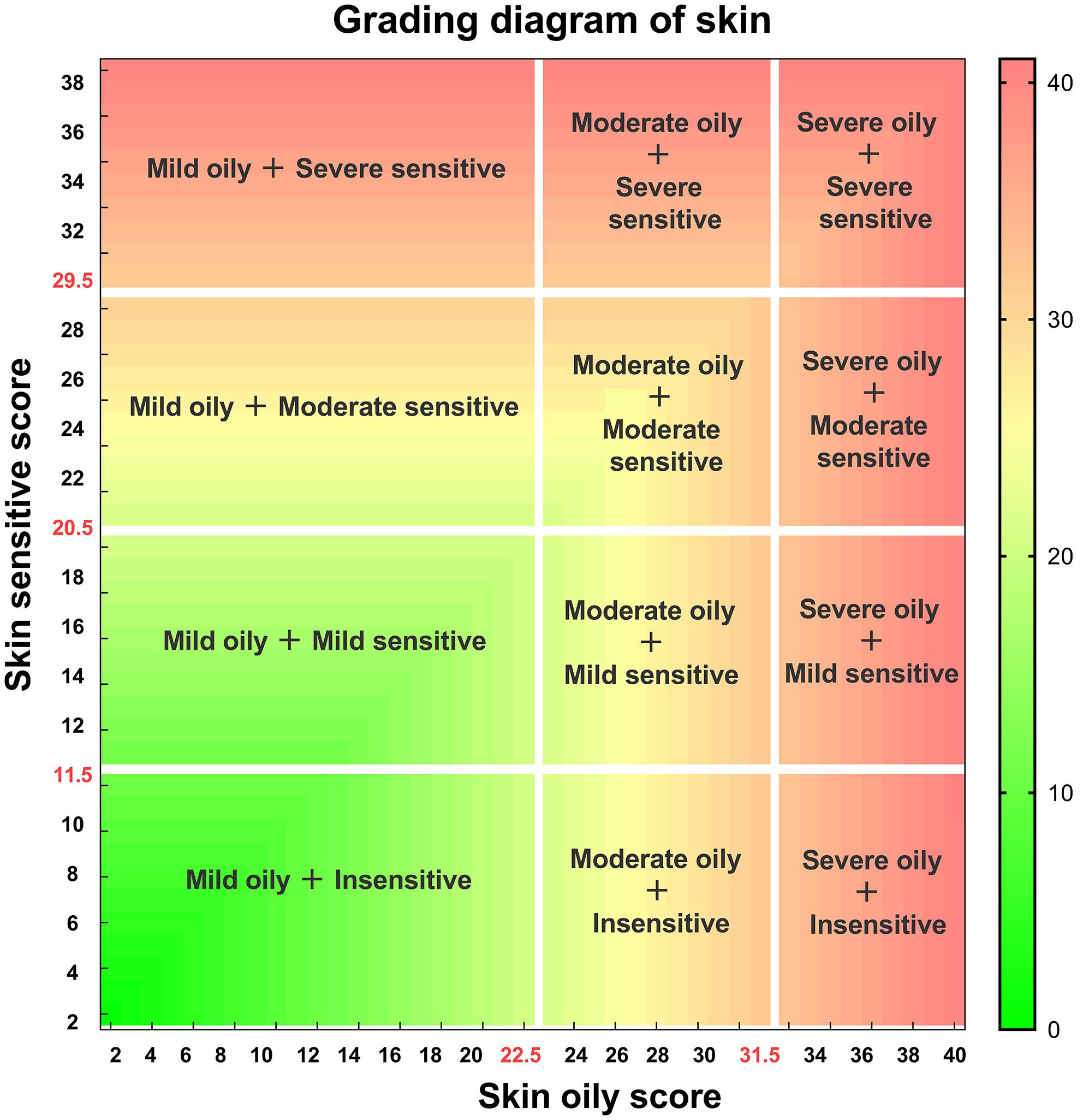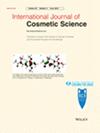Skin type has a strong influence on how sensitive skin develops, with oily skin accounting for a larger proportion of sensitive skin. However, there has not been a scientifically sound questionnaire for determining oily sensitive (OS)-type skin in prior studies.
In order to identify OS-type skin in the general population, we therefore intend to create an OS-type skin evaluation questionnaire, develop various thresholds through data analysis and classify skin based on two dimensions of sensitivity and oiliness.
A questionnaire with questions regarding subjects' basic information, skin oiliness and skin sensitivity was given to each individual who participated in the study (n = 1297). To define the thresholds for OS-type skin, receiver-operating characteristic (ROC) curves were generated. The results of the lactic acid stinging test (LAST) and noninvasive instrument information obtained were compared with the thresholds mentioned above to verify the effectiveness of this tool.
According to the ROC curves, questionnaire cut-off values of 11.5, 20.5 and 29.5 can be used to detect mildly, moderately and severely sensitive skin, respectively. In addition, the questionnaire cut-off values of 22.5 and 31.5 can be used to detect moderately and severely oily skin, respectively. According to our study, the four sensitive-skin groups' LAST scores differed significantly from one another, while the skin sebum levels differed significantly between the three oily groups. Additionally, the EI and LAST scores were significantly correlated with skin sensitivity levels, whereas sebum, moisture and EI were positively correlated with skin oiliness levels.
We developed an OS-type skin evaluation questionnaire that has been tested and shown scientifically to be a promising method for evaluating OS-type skin and to completely examine the traits of sensitive and oily skin.




